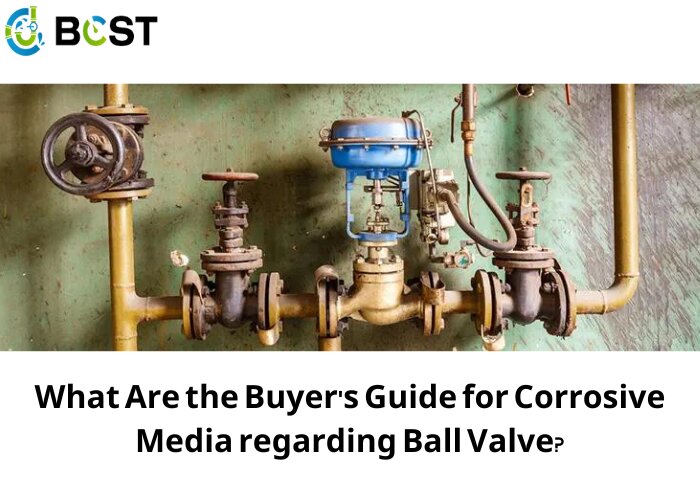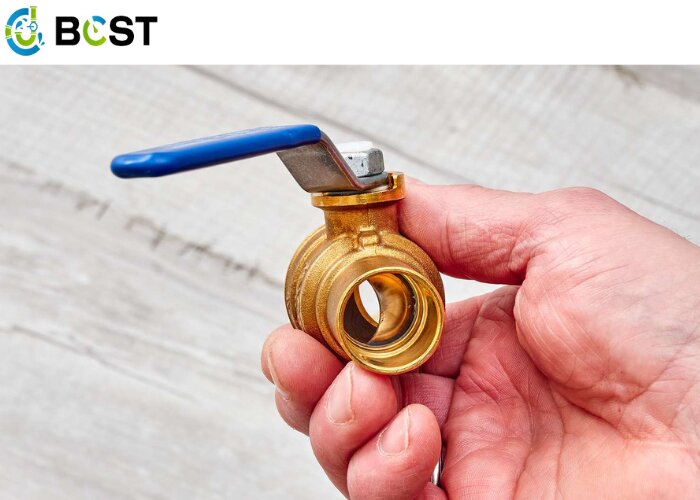
Ball valves are commonly employed in corrosive media industries such as chemical processing, oil and gas, water treatment, and pharmaceuticals. When working with corrosive media, selecting appropriate ball valve materials is critical to ensuring the valve’s safety, efficiency, and lifetime.
For numerous reasons, ball valves are preferable over other valves in corrosive environments.
- Simple design:The ball valve design reduces the amount of corrosion-prone components. Ball valves feature fewer internal parts than other types of valves, such as globe or gate valves, which means that a corrosive environment can damage fewer surfaces.
- Tight shut-off:Ball valves have a ball-shaped disc that rotates to control the flow of fluid through the valve. When the ball is closed, it creates a tight seal with the valve body, preventing leakage. Because of this, ball valves are suited for use in areas where even minor leakage can cause major issues.
Corrosion is the progressive deterioration of metal caused by chemical or electrochemical reactions with its surroundings. Ball valve corrosion can cause leaks, valve failure, and other operational concerns, such as the ball being caught inside the valve.
Corrosion in ball valves can be caused by a variety of circumstances, including exposure to harsh chemicals, high temperatures, and high-pressure conditions. Ball valves can become corroded for a variety of causes.
- Exposure to corrosive environments:When exposed to corrosive environments such as seawater or acidic solutions, ball valves manufactured of particular materials, such as carbon steel or cast iron, are prone to corrosion. Corrosion can also happen when the valve comes into contact with acids, alkalis, or chlorine.
- Galvanic corrosion:When two dissimilar metals come into touch with each other in the presence of an electrolyte, galvanic corrosion occurs. When different materials are utilized for the body, ball, and stem of a ball valve, this can happen. If the electrochemical characteristics of these materials differ, the flow of electrical current might cause corrosion.
- Erosion-corrosion:Mechanical wear and chemical attack induce erosion-corrosion. This can happen in ball valves that are subjected to high-velocity flows or abrasive fluids. The fluid’s mechanical movement can wear away the protective oxide layer on the valve surface, exposing the underlying metal to corrosion.
- Microbial-induced corrosion:Microbial-induced corrosion (MIC) is produced by microorganisms that colonize the surface of ball valves, such as bacteria and fungi. These microorganisms have the ability to create acids and other corrosive chemicals, which can attack the metal surface and cause corrosion.
Material Selection
General materials
Materials such as stainless steel, titanium, Hastelloy, and other alloys may be utilized depending on the application. These materials are noted for their corrosion resistance and ability to tolerate harsh chemicals and conditions.
- Stainless steel 316 is recommended for extremely corrosive situations, whereas stainless steel 304 is appropriate for mildly corrosive environments. Discover how to choose between stainless steel 316 and 304.
- Plastic ball valves, such as PVC and CPVC, are highly corrosion resistant but may not be appropriate for high-temperature applications. They are normally rated for a maximum temperature of 60 °C.
- Soft-seated valves with resilient elastomeric materials, such as FKM, FFKM, or EPDM, can perform excellent sealing in corrosive environments.
What are the Effects of Concentration, Pressure, and Temperature?
Different materials react differently to different substances and situations, making it challenging to select the best one. Low amounts of sulfuric acid, for example, can erode steel, whereas high concentrations can form a protective layer. Only at high temperatures and pressures does hydrogen damage steel, whereas chlorine is not extremely corrosive when dry but can be very corrosive in humid situations. Choosing the proper material for the valve body requires taking into account elements such as pressure and temperature resistance, cost, and availability, in addition to corrosion prevention.
Design
- Fewer crevices:Ball valves used in corrosive settings have a design that reduces the risk for corrosion, such as fewer crevices or dead spots where corrosive media might accumulate. A full port ball valve can also decrease corrosive media buildup, but a reduced port ball valve may be more prone to buildup and corrosion.
- Double sealing system:A double sealing system on an anti-corrosive ball valve adds an extra layer of protection against corrosive media. This system normally has two sets of seals to prevent corrosive media from reaching the valve and damaging internal components.
- Stem protector:A ball valve’s stem is a vital component that is prone to corrosion. A stem protector may be included in anti-corrosive ball valves to protect the stem from corrosive medium exposure. This can be accomplished by employing corrosion-resistant coatings or materials.
Coatings
Coatings form a barrier between the metal and the corrosive medium, preventing direct contact and lowering corrosion risk. Teflon, epoxy, and other polymer coatings are examples of coatings. To prevent against corrosion and increase the life of the valve, the stem and ball can be coated with a corrosion-resistant substance such as PTFE.
Corrosive Media's Material Compatibility
Sulfuric Acid
- Stainless steel (SS316):At concentrations up to 20% and temperatures up to 150 °C (302°F), SS 316 is highly resistant to sulfuric acid. It may, however, corrode at higher concentrations and temperatures.
- Hastelloy:Hastelloy is highly resistant to sulfuric acid at concentrations up to 70% and temperatures up to 100 °C (212 °F). It may corrode at higher concentrations and temperatures.
- Polypropylene (PP):At concentrations up to 70% and temperatures up to 80 °C (176 °F), PP is resistant to sulfuric acid. It should not, however, be used with concentrated sulfuric acid or at greater temperatures.
- PTFE (Teflon):At concentrations up to 98% and temperatures up to 200 °C (392 °F), PTFE is very resistant to sulfuric acid. It may not, however, be suited for high-pressure applications.
- Viton:Viton is extremely resistant to aqueous sulfuric acid. It may not, however, be suited for high-pressure applications.
- Under high pressure and high temperature conditions, ceramic ball valves are a more expensive alternative.
Hydrochloric Acid
- PVDF, PTFE, Hastelloy C, and titanium
Nitric acid
- Concentrated nitric acid (above 70%):Ball valves made from materials such as Hastelloy C, titanium, or zirconium are recommended due to their excellent corrosion resistance in highly oxidizing environments.
- Dilute nitric acid (below 70%):Materials such as stainless steel, PTFE, or FKM can be used for ball valves operating in dilute nitric acid solutions at low pressures and temperatures.
- High temperature and pressure nitric acid: Due to their great strength and corrosion resistance at increased temperatures, materials such as Inconel or Monel may be ideal for ball valves operating In high temperature and high pressure nitric acid solution.
Chlorine
- Hastelloy C-276, titanium, Monel, and PVC
Ammonia
- Stainless steel 316, PTFE (for 10% ammonia)
Alcohols, Ketones, Esters, Ethers
- Alcohols:Stainless steel
- Ketones:Ketones are highly reactive and may cause damage to some valve materials. Acetone, for example, can dissolve certain types of plastic valves.
- Stainless steel and brass valves may be appropriate for certain ketones, but specific recommendations should be sought from the valve maker.
- Esters:Esters and stainless steel valves are often compatible. Some esters, such as ethyl acetate, are more aggressive and may necessitate the application of coatings.
- Ethers:Ethers are very reactive and can cause damage to some valve materials. Stainless steel and brass valves are appropriate for usage, although specific recommendations should be sought from the valve manufacturer.







